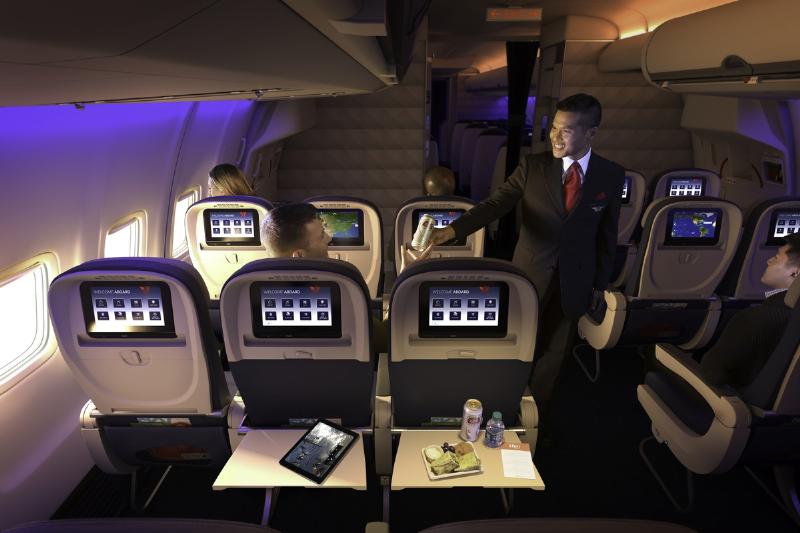Skift Take
Until it begins working according to the standards many expect, perhaps it would be best for airlines to price the future accordingly.
Five hours into my United flight from San Francisco to Beijing, I’m only one hour into my streaming in-flight movie.
The wireless connection serving up Internet and in-flight movies is temperamental at best and nonexistent at worst, and I find myself mashing the reload button on Ben Affleck’s stalled out face over and over again, taking out my anger on a completely fictional movie character.
I’m not the only passenger having problems. Search “In-flight Internet” or “Wi-Fi” on any random Twitter stream and you’ll see scores of complaints logged each and every day – and that’s the people that can actually connect for long enough to send out a message.
The problem with Wi-Fi in today’s airline ecosystem is that it’s marketed as a feature when at best it’s a prototype. Ford sells cars with leather seats as a feature. They’re included in the main product, they work 100% of the time and they provide added value to the driving experience. Today’s Wi-Fi, by contrast, can’t deliver that. Even when the hardware is functional, bandwidth constraints slow the lion’s share of connected flights down to the points where passengers can do little more than check their email.
What makes the problem difficult to manage is that poor connectivity is rarely the airline’s fault. Most carriers operate with third-party Internet providers (or at least third party hardware) and they have no control over satellite feeds or ground networks. But marketed as an airline’s in-flight wireless product, they end up taking the blame.
On one of my American flight between San Francisco and Chicago last week, the purser made several announcements apologizing for the Internet – not because it was the airline’s fault, mind you, but because it was interpreted as such.
Fortunately, in-flight internet providers are racing around the clock to develop and integrate new technologies like 2KU for better and faster connectivity. And with that stronger infrastructure and wider bandwidth, tomorrow’s traveler will surely be exposed to a better-connected experience.
In the meantime, airlines are stuck serving up a substandard experience and taking the blame for when things go wrong. To get their feet out of the fire, airlines should set up strong channels from the connectivity provider to the carrier to passenger to appropriately set expectations and provide support for when things go wrong. Only then will WiFi finally be considered a feature.
The Daily Newsletter
Our daily coverage of the global travel industry. Written by editors and analysts from across Skift’s brands.
Have a confidential tip for Skift? Get in touch
Tags: amenities, in-flight, wi-fi
Photo credit: A promotional image from Delta showing everything humming along just fine. Delta Air Lines
